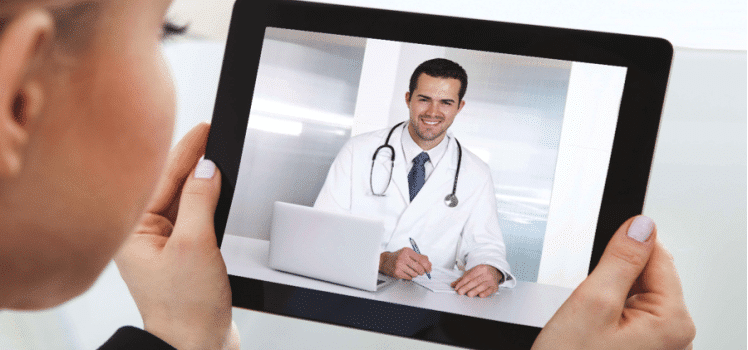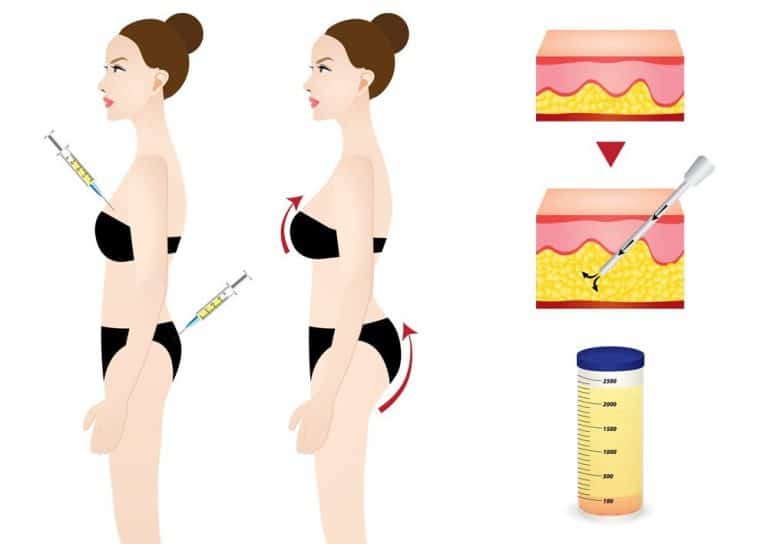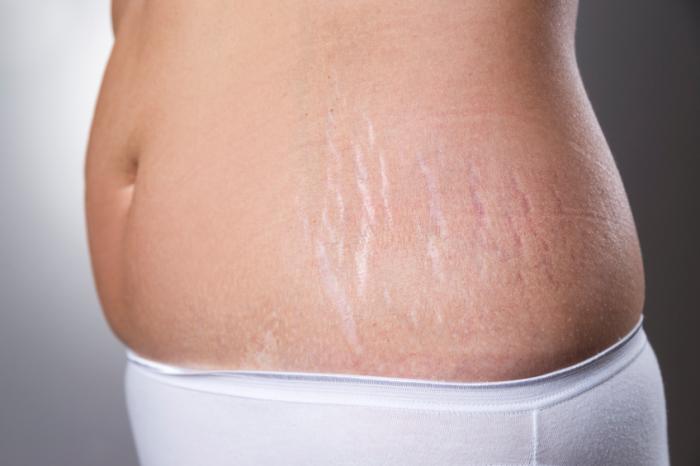Exploring non-surgical alternatives to traditional liposuction is changing the game for body contouring. Many people want to avoid invasive procedures like fat removal surgery while still achieving their desired look through surgical lipo alternatives and other liposuction alternatives. Non-surgical options offer effective solutions without the downtime associated with surgery. Treatments like CoolSculpting and laser fat removal are gaining popularity for their convenience and results.
These methods target stubborn fat areas with minimal discomfort. Patients can return to daily activities quickly, making these alternatives appealing. As technology advances, more options, including traditional surgery, are available that cater to different needs and preferences. This post dives into the benefits of these non-invasive treatments and how they stack up against traditional liposuction.
Key Takeaways
- Non-surgical alternatives to traditional liposuction offer effective fat reduction without the need for invasive surgery, making them a suitable option for many individuals.
- Consider options like radiofrequency, ultrasound, and laser treatments that can target fat cells while promoting skin tightening and improving overall appearance.
- Injectable fat solutions provide a convenient way to reduce localized fat areas, which can be appealing for those looking for quick results with minimal downtime.
- Always consult with a qualified professional to discuss your goals and determine the best non-surgical option tailored to your needs.
- Be aware of potential risks and side effects associated with non-invasive procedures, and ensure you are informed before making a decision.
- Remember that maintaining a healthy lifestyle is crucial, as these treatments work best when combined with proper diet and exercise.
Understanding Traditional Liposuction
Procedure Overview
Traditional liposuction is a surgical procedure that removes fat from specific areas of the body. Surgeons make incisions in the skin to access the fat deposits in traditional surgery. They then insert a thin tube called a cannula. This device suctions out the unwanted fat. The procedure often targets areas like the thighs, abdomen, and arms.
Surgeons typically use various surgical liposuction techniques. One common method is tumescent liposuction. This technique involves injecting a solution into the fatty area before suctioning. The solution helps numb the area and reduces bleeding.
Risks Involved
Despite its popularity, traditional liposuction carries risks. Common complications include infection, scarring, and prolonged recovery time. Infections can occur at the incision sites. They may require additional treatment, extending recovery.
Scarring is another concern for many patients. While surgeons try to minimize visible scars, they can still be noticeable. Prolonged recovery can vary by individual but may last several weeks. Patients often experience swelling and bruising during this time.
Anesthesia Considerations
General anesthesia is typically required for traditional liposuction. This means patients are completely unconscious during the procedure. While general anesthesia is effective, it also carries risks. Complications can arise from anesthesia itself, including respiratory issues or allergic reactions.
Patients must undergo surgical liposuction consultations beforehand. These consultations help determine if they are suitable candidates for the procedure. Surgeons assess medical history and discuss potential risks with patients.
The implications for patient safety are significant. Monitoring during surgery is crucial to ensure stable vital signs. Recovery also requires careful observation to manage any adverse effects from anesthesia.
Alternative Options
Many individuals seek alternatives to invasive liposuction methods due to these risks. Various liposuction alternatives exist that do not involve surgery. These options can provide body contouring with less downtime and fewer complications.
Non-surgical techniques include laser therapy and ultrasound treatments. These methods target fat cells without making incisions or using general anesthesia. Patients often find these alternatives appealing because of their lower risk profiles.
In summary, understanding traditional liposuction involves recognizing its procedures, risks, and anesthesia implications. Many individuals opt for safer alternatives as awareness of these factors grows.
Overview of Non-Surgical Alternatives
Advanced Technologies
Non-surgical alternatives to traditional liposuction use advanced technologies like lasers and ultrasound. These methods target fat cells without the need for incisions. Lasers can heat and destroy fat cells, while ultrasound waves break them apart. Both techniques focus on specific areas, such as the abdomen or neckline.
Patients appreciate these options because they are less invasive. There is no need for general anesthesia. This reduces the risk of complications like nerve damage and infection. Clinics offer these treatments in a comfortable setting, allowing patients to relax during the process.
Cost-Effectiveness
Cost is a significant factor when considering surgical procedures. Non-surgical options tend to be more affordable than traditional surgery. Patients often pay less upfront. They also save on costs related to recovery time.
Traditional liposuction involves longer hospital stays and follow-up visits. Non-surgical methods usually require fewer sessions, making them easier on the wallet. For many, this makes non-invasive alternatives an attractive option.
Shorter Recovery Periods
Recovery time is another important aspect to consider. Traditional liposuction requires weeks of healing after surgery. Patients often deal with pain and swelling during this period. In contrast, non-surgical alternatives offer quicker recovery times.
Most patients return to daily activities almost immediately after treatment. Some may experience mild discomfort, but it typically resolves quickly. This allows individuals to enjoy their results sooner without the lengthy downtime associated with surgical lipo.
Safety and Comfort
Safety remains a concern for many people considering body contouring options. Non-surgical procedures reduce risks associated with anesthesia and incisions. Patients feel more at ease knowing they can avoid potential complications from traditional surgery.
These treatments also minimize pain levels during the procedure. Many report feeling only slight discomfort, if any at all. This comfort level encourages more individuals to explore non-invasive ways to achieve their desired body shape.
Benefits of Non-Invasive Procedures
Reduced Risk
Non-invasive procedures carry a reduced risk of infection. Traditional liposuction involves surgical incisions. These incisions can lead to complications. In contrast, non-invasive methods do not require cuts or stitches. This significantly lowers the chance of infection and scarring.
Patients often feel relieved knowing that they can avoid these risks. Many people worry about post-surgical complications. Non-invasive techniques provide peace of mind. They allow individuals to focus on their results rather than recovery issues.
Minimal Downtime
Minimal downtime is another major advantage. After traditional liposuction, recovery can take weeks. Patients may experience swelling and bruising during this time. Non-invasive procedures, however, allow for a quicker return to daily activities.
Most non-invasive treatments require little to no recovery time. Patients can often resume work and exercise within days. This convenience appeals to many individuals seeking body shaping options.
Precision and Targeted Results
Precision is key in body shaping. Non-invasive techniques offer targeted results that are hard to achieve with invasive procedures. Technologies like ultrasound or laser focus on specific areas of fat.
These methods allow practitioners to customize treatments for each patient. The ability to target stubborn areas makes these procedures effective. For example, someone might want to reduce fat around their neck or back. Non-invasive procedures can address these needs effectively.
Patients appreciate the precise nature of these treatments. They often see noticeable changes without the need for extensive recovery. The effectiveness of these methods contributes to their growing popularity.
Energy and Comfort
Energy levels also improve after treatment when patients choose non-invasive options. Many report feeling more energetic post-procedure compared to traditional methods. The absence of surgical stress allows the body to recover faster.
Comfort is another important factor for patients considering body shaping options. Non-invasive procedures typically involve minimal discomfort. Some techniques even use numbing agents, making the process more pleasant.
Patients who have undergone both invasive and non-invasive procedures often prefer the latter for comfort reasons. They appreciate how easy it is to fit treatments into their lives without significant disruption.
Types of Non-Surgical Treatments
CoolSculpting
CoolSculpting is a popular non-invasive treatment. It uses cryolipolysis to freeze fat cells. The body then naturally eliminates these dead cells. This method works well on areas like the abdomen, thighs, and flanks. Many patients see noticeable results after just one session. However, some may need maintenance sessions for optimal results.
Radiofrequency
Radiofrequency treatments use heat to target fat cells. This method tightens the skin while reducing fat. It is effective for areas like the stomach and arms. Patients often enjoy smoother skin texture as a bonus. Several sessions might be necessary to achieve desired outcomes.
Laser Therapies
Laser therapies involve using focused light to break down fat cells. This treatment type can work on various body parts, including the chin and thighs. The procedure is quick and requires minimal downtime. Patients often appreciate how painless it is compared to traditional methods.
Injectable Options
Injectable options are gaining popularity for localized fat reduction. Kybella is one such treatment that targets submental fat, commonly known as a double chin. It contains deoxycholic acid, which helps dissolve fat cells. Patients typically see results within a few weeks after treatment. Multiple injections may be needed for the best effect.
Combination Therapies
Combination therapies enhance results by using multiple technologies together. For instance, pairing CoolSculpting with radiofrequency can improve both fat reduction and skin tightening. These approaches allow for more comprehensive treatment plans tailored to individual needs. By combining different techniques, practitioners can address various concerns in one session.
Treatment Sites
Different types of non-surgical treatments can target specific treatment sites effectively. Common areas include the abdomen, thighs, arms, and under the chin. Each treatment type has its strengths based on the area being treated.
Results Timeline
Results from non-surgical procedures vary by treatment type and individual response. Some methods show immediate results, while others take weeks or months as the body eliminates fat naturally. Regular follow-up appointments help track progress and adjust future treatments if necessary.
Safety and Considerations
Non-invasive treatments generally have fewer risks than surgical methods. Most patients experience mild side effects like swelling or bruising at the treatment site. Consulting with a qualified practitioner ensures safety and effectiveness in achieving desired outcomes.
Radiofrequency and Ultrasound Options
Radiofrequency Treatments
Radiofrequency treatments use energy waves to heat the skin. This process stimulates collagen production. ThermiTight is a popular radiofrequency option. It involves inserting a small probe under the skin. This probe delivers controlled heat, tightening the skin while reducing fat.
ThermiTight can treat various areas, including the abdomen and arms. The results appear gradually over time. Patients often see improvements for up to two years after treatment. This method is less invasive than traditional liposuction. It requires little downtime, allowing patients to return to normal activities quickly.
Safety is a major benefit of radiofrequency treatments. They have a low risk of complications compared to surgical options. Most patients experience minimal discomfort during the procedure. Common side effects include swelling and redness, which usually fade within a few days.
Ultrasound Treatments
Ultrasound treatments also offer effective non-surgical options. Ultherapy is one of the leading ultrasound procedures. It uses focused ultrasound waves to penetrate deep into the skin. This technique stimulates collagen production without damaging the outer layer of skin.
Ultherapy targets areas like the neck, chin, and brow. Results can be seen immediately but improve over several months. Many patients enjoy lasting effects for one to two years after treatment.
This method is known for its safety profile as well. There is no need for anesthesia or significant recovery time. Patients can resume their daily routines right after the procedure. Side effects are typically mild and may include slight redness or swelling.
Benefits of These Methods
Both radiofrequency and ultrasound treatments provide significant benefits. They are non-invasive, meaning no surgery is required. This reduces risks associated with traditional liposuction.
Patients appreciate that these options offer natural-looking results. The gradual improvement allows for a more subtle transformation. Both methods require less downtime compared to surgical alternatives.
Cost is another consideration for many individuals. Non-surgical treatments often come at a lower price point than surgical procedures. While multiple sessions may be needed, many find them more affordable in the long run.
In summary, radiofrequency and ultrasound options present effective alternatives to traditional liposuction. They provide safe, non-invasive solutions for skin tightening and fat reduction. With advancements in technology, these methods continue to evolve, offering even more choices for those seeking body contouring without surgery.
Laser-Based Fat Reduction
Mechanism of Action
Laser treatments like Zerona use specific wavelengths of light. This light penetrates the skin and targets fat cells. The energy from the laser disrupts the cell membranes of these fat cells. As a result, this process causes the fat cells to release their contents. The body then naturally eliminates these fatty substances. This method is effective for reducing excess fat without surgery.
Non-Invasive Precision
Laser-based fat reduction is non-invasive. Patients do not need anesthesia or long recovery times. This makes it a popular choice for many seeking body contouring. Precision is another key benefit. Lasers can target specific areas with minimal damage to surrounding tissues. This reduces the risk of complications often seen in traditional liposuction.
Effectiveness of Treatments
Different laser treatments offer varying degrees of effectiveness. For example, SculpSure uses a different technology than Zerona. SculpSure heats fat cells to destroy them, while Zerona uses cold lasers. Studies show that both methods can lead to noticeable fat loss. However, results may vary based on individual factors like metabolism and lifestyle.
- Zerona:
- Non-invasive
- Targets stubborn fat areas
- Requires multiple sessions for optimal results
- SculpSure:
- Uses heat to eliminate fat
- Short treatment time
- Can treat larger areas at once
Other options include CoolSculpting, which freezes fat cells, and SmartLipo, which combines laser technology with minimal invasiveness. Each option has its own set of pros and cons.
Considerations for Patients
Patients should consider several factors before choosing a laser treatment. The desired outcome plays a significant role in decision-making. Some may want immediate results, while others may prefer gradual changes. Consulting with a qualified practitioner is essential. They can provide insights into which procedure aligns best with individual goals.
Patients must maintain realistic expectations about results. While laser treatments can effectively reduce fat, they are not weight-loss solutions. A healthy diet and regular exercise are crucial for maintaining results after any fat removal procedure.
Injectable Fat Solutions
Kybella Treatment
Injectable treatments like Kybella play a significant role in dissolving fat cells. Kybella contains deoxycholic acid, which the body naturally produces to break down dietary fat. When injected into specific areas, it destroys fat cells. This process helps reduce localized fat deposits, particularly under the chin.
Kybella is effective for small areas where traditional liposuction may not be suitable. Patients often prefer this method because it targets stubborn fat effectively. The treatment can improve the contour of the jawline, providing a more defined appearance.
Aqualyx Overview
Aqualyx is another injectable option for fat reduction. It works similarly to Kybella but uses a different formulation. Aqualyx is a compound that breaks down fat cells when injected into targeted areas. This treatment is especially beneficial for localized fat pads, such as love handles or inner thighs.
Patients find Aqualyx appealing due to its non-surgical nature. The procedure requires minimal downtime compared to traditional liposuction. Many individuals appreciate the ability to achieve a slimmer silhouette without extensive recovery time.

Procedure Benefits
The injectables offer minimal invasiveness and quick procedure times. Both Kybella and Aqualyx involve simple injections that can be completed in about 30 minutes. There is no need for general anesthesia, which reduces risks associated with surgery.
Patients often experience mild swelling or bruising after treatment, but these effects usually resolve quickly. Most individuals can return to their daily activities shortly after the procedure.
Injectable treatments are suitable for those looking for subtle changes rather than dramatic transformations. They work best on small, localized areas of fat that do not respond well to diet and exercise.
Ideal Candidates
Not everyone is an ideal candidate for injectable treatments. Individuals with larger amounts of fat may still require traditional liposuction for significant results. However, those with specific trouble spots often find injectables to be a perfect solution.
Consultation with a qualified practitioner is essential before starting any injectable treatment. They can assess each person’s unique needs and recommend the best course of action.
Risks and Considerations
Side Effects
Non-surgical alternatives to traditional liposuction can have potential risks. Common side effects include bruising, swelling, and temporary discomfort. These effects usually resolve within a few days. However, some individuals may experience longer recovery times, especially if they undergo multiple treatments.
In rare cases, patients report more serious issues like skin damage or uneven results. It’s essential to understand these risks before proceeding with any treatment. Consulting with a qualified professional helps assess individual needs and expectations.
Consultation Importance
Consultation is crucial before starting any non-surgical procedure. A qualified professional evaluates health history and body goals. This assessment determines the best approach for each person. They can also explain the cost associated with different treatments.
Understanding the technologies involved is important too. Each method has unique benefits and drawbacks. Professionals can guide choices based on specific areas, such as thighs or flanks. This personalized approach increases the chances of satisfactory results.
Treatment Sessions
Achieving desired results often requires multiple sessions. Some procedures may not deliver immediate outcomes. For instance, injectable fat solutions might need several appointments for optimal effectiveness.
Patients should be prepared for this commitment in both time and finances. Discussing the expected number of sessions during the consultation is vital. Knowing what to expect can help manage expectations and reduce anxiety about the process.
Recovery Times
Recovery times vary based on the chosen technology and individual response. Many non-surgical methods offer quicker recovery compared to traditional liposuction. Most people can return to normal activities within a few days.
However, some patients may experience prolonged discomfort or swelling that lasts longer than expected. Tracking recovery progress is important to ensure everything is healing properly.
Results Assessment
Results from non-surgical procedures may take time to appear fully. Patients should remain patient while waiting for changes to become noticeable. Regular follow-ups with healthcare providers can help track progress and address any concerns.
In summary, understanding the risks and considerations associated with non-surgical alternatives is essential. Each individual’s experience may differ based on personal factors and treatment type. Proper consultation and realistic expectations lead to better outcomes.
Final Remarks
Exploring non-surgical alternatives to traditional liposuction opens up exciting options for body contouring. These procedures offer effective ways to reduce fat without the downtime associated with surgery. From radiofrequency to injectables, you have choices that can fit your lifestyle and goals. Understanding the benefits and risks helps you make informed decisions.
Take charge of your body transformation journey today. Research these non-invasive treatments, consult with professionals, and choose what suits you best. Your path to confidence and satisfaction is just a step away. Don’t hesitate—explore these alternatives and find the right fit for your needs!
Frequently Asked Questions
What is traditional liposuction?
Traditional liposuction is a surgical procedure that removes fat from specific areas of the body using a suction technique. It requires anesthesia and has longer recovery times compared to non-surgical alternatives.
What are non-surgical alternatives to liposuction?
Non-surgical alternatives include treatments like CoolSculpting, radiofrequency therapy, and laser fat reduction. These options target fat without invasive surgery, offering less downtime and lower risks.
Are non-surgical fat reduction methods effective?
Yes, non-surgical fat reduction methods can effectively reduce localized fat deposits. Results vary by individual, but many patients see noticeable improvements after treatment.
How long do results last from non-surgical treatments?
Results from non-surgical treatments can last for several months to years, depending on the method used and lifestyle choices. Maintaining a healthy diet and exercise routine helps prolong results.
Are there any risks associated with non-surgical fat reduction?
While generally safer than surgery, non-surgical options may have side effects like swelling or bruising. It’s essential to consult with a qualified professional to discuss potential risks.
How much do non-surgical alternatives cost?
Costs for non-surgical fat reduction vary widely based on the treatment type and provider. On average, sessions can range from a few hundred to several thousand dollars.
Who is a good candidate for non-surgical fat reduction?
Good candidates are typically at or near their ideal weight but wish to target specific areas of stubborn fat. A consultation with a specialist can help determine suitability.











